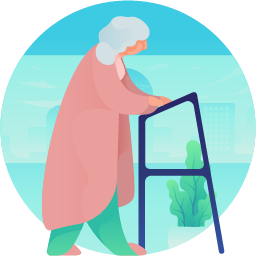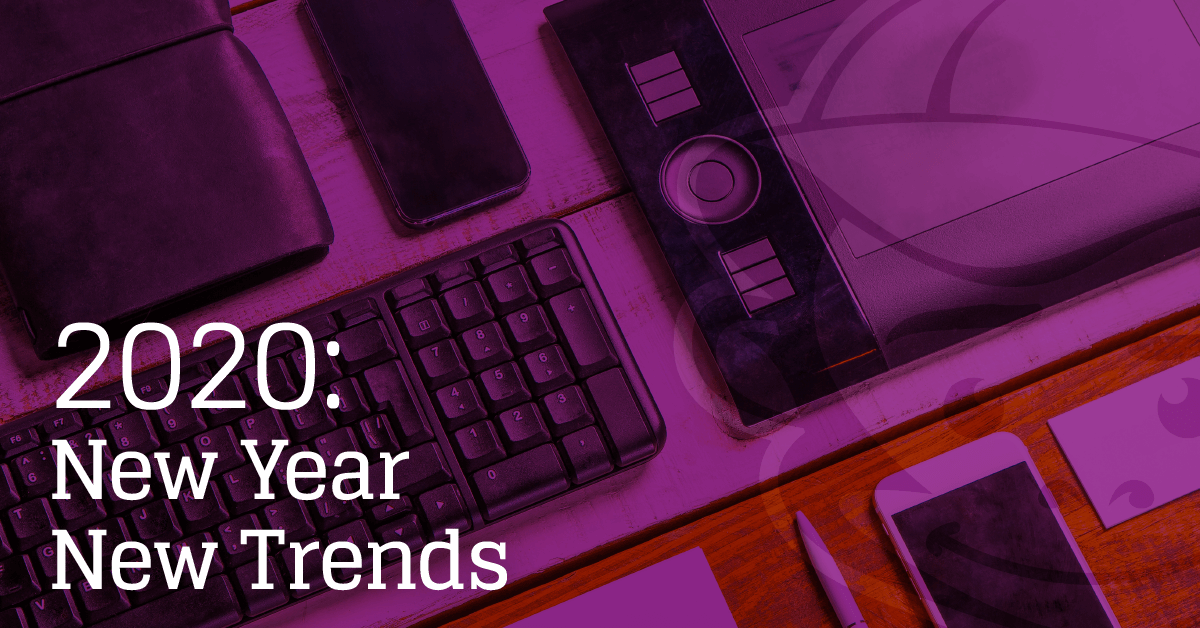Every year we see classic trends rise and fall. Things like ultra-minimalism with tons of white space, or brutalism in web design. Every year we see designs that become the latest craze. Below is Cheeky Monkey Media’s top five 2020 trend predictions:
#1 Inclusive Design
 Inclusive design has been trending for a few years now, but in 2020 inclusive design is predicted to be one of the top trends and for a good reason. As a business, we never want to leave any of our potential customers out when working on enticing the market place.
Inclusive design has been trending for a few years now, but in 2020 inclusive design is predicted to be one of the top trends and for a good reason. As a business, we never want to leave any of our potential customers out when working on enticing the market place.
Okay, but what is inclusive design? It’s designing for specific people with specific needs and abilities. Essentially, you’re trying to solve problems that could exclude users from your site/product. It’s making your designs accessible to customers outside of your regular target market and usable to customers with a broad range of diverse abilities.
Loads of companies only engage with a particular target audience, which means they’re missing out on a ton of opportunities outside of that narrow sliver. When you broaden your design to be more inclusive, your company can begin to engage with new audiences, expanding your target audience and sales to people previously unreachable.
We know including everyone in the world into your audience is darn near impossible, but improving overall accessibility is a no-brainer. This trend will stay on the rise in 2020, and you should embrace it to increase annual revenue, user experience, and more. You can learn more about accessible web design here.
#2 Mobile Friendly
 Every year more users are using mobile devices more than traditional desktops and laptops. Mobile users increased from 37.38% to 48.33%, while desktop usage dropped from 54.86% to 46.5% in November 2019. This shift isn’t showing any signs of slowing down anytime soon.
Every year more users are using mobile devices more than traditional desktops and laptops. Mobile users increased from 37.38% to 48.33%, while desktop usage dropped from 54.86% to 46.5% in November 2019. This shift isn’t showing any signs of slowing down anytime soon.
With this in mind, a mobile-friendly, responsive website is just going to keep becoming more necessary for great UX. More and more, younger target audiences are choosing only to use their mobile devices for browsing.
Do you know if your site is viewable across all platforms? Does it work well on phones, tablets, desktops, laptops, and even other more uncommon devices like smart TVs? It’s hard to make sure that your site delivers on every front while you’re trying to manage the rest of your business. We’re heading into 2020, you’re looking to work on your site, and you want to work with an agency that understands your problems and can deal with them. Y’know, maybe an agency like Cheeky Monkey Media. Just sayin’! Specialist web development companies, like us, work with you to find a perfect strategy. We’ll perform a site audit so that we have informed knowledge and concrete data to start putting together a mobile strategy and UX plan.
A fully responsive website will increase your ability to be competitive in a rapidly growing market. Period.
#3 Chat Bots
 Customer support is a critical part of great UX. Users these days expect instant support and service. In 2020 you can expect to see the rise and increased business usage of chatbots. (Let’s try and avoid a SkyNet situation though, okay? Okay. Cool. We’re trusting you on this one.)
Customer support is a critical part of great UX. Users these days expect instant support and service. In 2020 you can expect to see the rise and increased business usage of chatbots. (Let’s try and avoid a SkyNet situation though, okay? Okay. Cool. We’re trusting you on this one.)
Think about this for a second: industry experts expect that 80% of companies will have a chatbot in 2020. Why? Because chatbots increase customer experience through automation. Automated bots can give instant results and support. This year businesses will start relying more on chatbots, with around 40% of consumers expecting to see chatbots on websites.
Wait up. I’m out of the loop. What exactly is a chatbot? Why do I need one on my site?
The purpose of chatbots is to automate simple support tasks, provide instant results for questions, and all sorts of other fundamental customer interactions. With customers wanting immediate results, chatbots are a perfect solution. A bot can help answer frequently asked questions for your users, walk them through support steps, and help alleviate the workload of your actual living, breathing support team.
Chatbots engage with your online audience instantly, giving you valuable data about your users, and even potentially converting them to customers. Not only that, chatbots decrease support costs because, well, you don’t need to pay a robot (Yet! Just wait until they take over.). If you want to dive a bit deeper, check out more about chatbot trends and statistics at intellectyx.
#4 Dark Mode
 Something that’s causing some friction in the design community in 2020 is the rise of “dark mode” designs. You might have noticed dark mode features have started appearing on smartphones and computers. It has some other names, too, like “night mode” or “night light mode.” There are pros and cons to both sides, but I think we’ll be seeing an uptick of designers falling to the Dark Side of the Force. Uh, I mean interface. The dark side of the interface. Yeah, that one.
Something that’s causing some friction in the design community in 2020 is the rise of “dark mode” designs. You might have noticed dark mode features have started appearing on smartphones and computers. It has some other names, too, like “night mode” or “night light mode.” There are pros and cons to both sides, but I think we’ll be seeing an uptick of designers falling to the Dark Side of the Force. Uh, I mean interface. The dark side of the interface. Yeah, that one.
Dark mode, if you’re unfamiliar, allows you to toggle between your typical bright white backgrounds to something dark and easier on the eyes. Dark mode designs are modern and sleek. If executed properly, colours can “pop” more in dark mode, and the different look can give off feelings of mystery and newness.
Not only does dark mode provide a rad sleek look for applications, but there are also physical benefits to your users. Dark mode can help lessen the eyestrain, blurred vision, dry eyes, and headaches that come with extended screen time. On top of that, it can improve battery life on mobile devices because the screen doesn’t need to use as much energy.
As with everything in life, there can be downsides to dark mode. There are times dark mode does not work well, primarily if the implementation is poor. In some situations like well-lit rooms or direct sunlight, it can be a bit harder to read the text. These are super small setbacks for dark mode, but your users will love to have it as an option.
While we don’t expect every website, program, or app to embrace dark mode, you’re going to be seeing more and more of it in 2020. Basement dwellers rejoice!
#5 Interactive Design
 We’re going to see a rise in interactive websites. Okay, well, most websites are interactive by their nature but hear us out.
We’re going to see a rise in interactive websites. Okay, well, most websites are interactive by their nature but hear us out.
Alright, so what does an interactive feature mean on today’s web? Think about small, actionable items that can help create a more meaningful, relevant experience. Elements ranging from interactive animations to highly visible enticing buttons, users can’t help but click on these. By planning your interactions, you can guide them through your website, helping you nail down your user journey.
Why interactive? You’ve only got a small window of time to capture audiences on your site. Having interactive elements helps keep them on your page longer. Simple as that. When users have a great experience, they linger, learn more about you, and ultimately create a stronger revenue stream for your business.
Incorporating interactions, small or large, can help create a personalized user experience. More than 70% of interactions with businesses happen online, and 90% of consumers will expect interactive features to help guide them through a website.
Wrapping It Up
As the years come and go, new trends take flight while others go the way of the dodo. Not all design trends are relevant to websites, but it’s crucial for all businesses, from small to enterprise, to keep them in mind moving forward. If you’re looking into new design work, site redesigns, or even monthly maintenance, it’s essential to know what the landscape out there looks like.
At the very least, you should learn more about your website through a site audit. Get in touch with one of our monkeys today to see how we can help improve your design and your visitors’ experiences. Better user flow, in conjunction with an engaging design, is a great way to increase your revenue and protect your ROI on your website.





